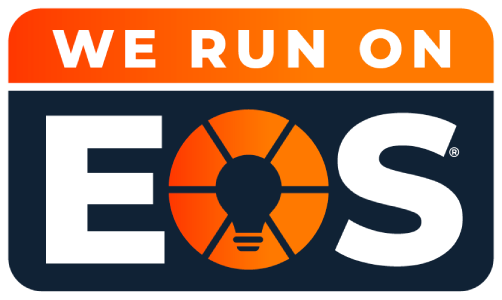The backbone of any successful organization lies in its team, the most efficient of which is a group working towards a shared vision and common goals. Clarity, alignment, and growth are paramount for companies running on EOS (Entrepreneurial Operating System). Assembling a high-performing team is not just advantageous – it’s essential for thriving in today’s competitive landscape.
Importance of Building a High-Performing Team
At the heart of every successful venture is a team that possesses the requisite skills and shares a common purpose and values. A high-performing team drives innovation and productivity and fosters a culture of collaboration, accountability, and excellence. For EOS businesses, where adherence to core values and alignment with organizational goals are central tenets, the significance of assembling an A-team cannot be overstated. These teams execute tasks and embody the organization’s ethos, propelling it toward sustained success and growth.
Introduction to the Entrepreneurial Operating System (EOS)
Enter the Entrepreneurial Operating System (EOS) – a comprehensive framework designed to help businesses achieve clarity, alignment, and traction in their operations. At its core, EOS provides a structured approach to organizational management, encompassing six key components: Vision, People, Data, Issues, Process, and Traction. Each element plays a crucial role in shaping the culture, strategy, and execution of EOS businesses.
In the context of talent acquisition, EOS serves as a guide for identifying, attracting, and retaining top talent who possesses the necessary skills and aligns with the company’s core values and vision. By leveraging the principles of EOS in talent acquisition, businesses can build teams that operate cohesively, drive toward a shared vision, and propel the organization forward in its journey toward success.
Understanding EOS Principles
The Entrepreneurial Operating System (EOS) is a powerful framework for businesses aiming to achieve clarity, alignment, and growth. At its core, EOS comprises six key components, each crucial in shaping organizational success. Let’s delve into each component and understand how they contribute to creating a cohesive and successful team:
- Vision: The foundation of EOS lies in establishing a clear and compelling vision for the organization. This involves articulating where the company is heading, what it aims to achieve, and ensuring everyone understands and aligns with this vision. A well-defined vision guides decision-making, goal-setting, and driving the organization forward with purpose and direction.
- People: Building a high-performing team is essential for any organization’s success. The People component of EOS focuses on defining and instilling core values that shape the organization’s culture. It emphasizes placing individuals in the right seats based on their skills, values, and alignment with the company’s vision. You create an environment conducive to collaboration, innovation, and collective success by surrounding yourself with the right talent.
- Data: In today’s data-driven world, making informed decisions is crucial for business success. The Data component of EOS emphasizes becoming more analytical and objective by identifying and tracking key metrics that directly impact the organization’s goals. By leveraging data effectively, businesses can monitor progress, identify opportunities, and make informed decisions to drive growth and profitability.
- Issues: Proactively addressing issues is vital for maintaining a healthy and efficient operational environment. The Issues component of EOS encourages creating a culture where team members feel empowered to raise and resolve issues openly. By tackling challenges at their root cause, organizations can prevent recurring problems, foster a culture of continuous improvement, and maintain momentum toward their goals.
- Process: Systemizing operations is essential for scalability and efficiency. The Process component of EOS focuses on documenting and optimizing core processes to create a standardized way of doing things. By establishing clear processes and workflows, businesses can ensure consistency, reduce reliance on individual knowledge, and scale operations effectively without compromising quality.
- Traction: Bringing discipline and accountability into the organization is crucial for achieving goals and driving results. The Traction component of EOS provides a framework for establishing and executing short-term and long-term objectives. It emphasizes regular check-ins (Level 10 Meetings) to track progress, address issues, and ensure everyone stays aligned towards common goals.
Each component plays a unique role in shaping organizational culture, strategy, and execution. By embracing the principles of EOS and aligning them with your talent acquisition strategy, you can build a cohesive and successful team that operates with clarity, alignment, and purpose.
Defining Your Ideal A-Team

Now that we’ve explored the fundamental principles of EOS, let’s shift our focus to defining your ideal A-Team. Building a high-performing team starts with identifying the characteristics, skills, and values that align with your company’s vision and EOS principles. Here’s how you can go about it:
Identify Characteristics, Skills, and Values
Take a deep dive into your organization’s vision, core values, and strategic objectives. Identify the key characteristics, skills, and values that are essential for success within your company’s culture. Consider factors such as leadership qualities, problem-solving abilities, teamwork skills, and cultural fit.
Craft a Clear Job Description
Armed with a clear understanding of your ideal A-Team, craft a compelling job description tailored to attract candidates who embody these qualities. Clearly outline the role’s responsibilities, qualifications, and expectations, emphasizing its alignment with your company’s vision and EOS principles. Use language that resonates with your target candidates and highlights the opportunities for growth and impact within your organization.
By defining your ideal A-Team and crafting a clear job description, you lay the foundation for attracting and selecting candidates who not only possess the required skills but also align with your company’s vision and culture. This targeted approach to talent acquisition ensures that you build a team that is capable, aligned, and committed to driving your organization toward its goals.
EOS Strategies for Talent Acquisition
In today’s competitive landscape, integrating Entrepreneurial Operating System (EOS) principles into your talent acquisition strategy can be a game-changer for businesses striving to build high-performing teams. Let’s explore some effective strategies for leveraging EOS in talent acquisition:
Incorporating EOS Principles
Start by infusing EOS principles into every stage of your recruitment process. From crafting job descriptions to conducting interviews and making hiring decisions, ensure that EOS core values and principles are embedded throughout. This alignment will attract candidates who resonate with your organization’s culture and ensure that new hires seamlessly integrate into the EOS framework.
Utilizing EOS Tools
Leverage EOS tools such as Scorecards and Core Value assessments to evaluate candidates effectively. Scorecards provide a structured framework for assessing candidates based on key criteria, ensuring that you focus on hiring individuals who possess the required skills and align with your company’s values and culture. Core Value assessments help identify candidates whose values are in harmony with your organization’s, fostering a culture of shared purpose and alignment.
Building a Talent Pipeline
Develop a pipeline for talent that aligns with EOS core values and organizational goals. Cultivate relationships with potential candidates who embody the qualities and skills you seek in your ideal A-Team. By nurturing a pool of talent that aligns with your company’s vision and values, you can ensure a steady influx of qualified candidates who are poised to contribute to your organization’s success.
Navigating Challenges in Hiring for EOS Businesses
While incorporating EOS principles into talent acquisition can yield significant benefits, it’s best to be mindful of the challenges that may arise along the way. Here are some strategies for navigating common obstacles in hiring for EOS businesses:
Addressing Cultural Mismatches
One of the primary challenges in talent acquisition within the EOS framework is ensuring alignment with the organization’s culture. To overcome this challenge, prioritize candidates with the required skills and cultural fit. Conduct thorough interviews and assessments to assess candidates’ alignment with EOS core values and principles, ensuring that they thrive within your organization’s unique culture.
Ensuring Alignment with EOS Principles
Another challenge is ensuring that new hires fully embrace EOS principles and integrate seamlessly into the organization. To this end, provide comprehensive onboarding and training programs that familiarize new hires with EOS concepts, values, and processes. Encourage open communication and collaboration, fostering a culture of accountability, transparency, and continuous improvement from day one.
By proactively addressing these challenges and leveraging EOS strategies for talent acquisition, businesses can build cohesive and high-performing teams that drive success and growth. Embrace the principles of EOS in your recruitment efforts, and watch as your organization thrives in today’s dynamic business landscape.
Practical Tips for Hiring Success
When hiring success within the Entrepreneurial Operating System (EOS) framework, practical implementation of EOS Talent Hacks is key. Let’s delve into actionable advice to enhance your hiring process and ensure alignment with EOS principles:
Implementing EOS Talent Hacks
This begins with understanding EOS’s core principles and values. Start by identifying the key EOS aspects most relevant to your hiring needs, such as cultural fit, core values alignment, and skills assessment. Then, develop strategies and protocols to integrate these principles into every stage of the recruitment process, from sourcing candidates to onboarding new hires.
Training HR Teams and Leadership

Effective implementation of EOS Talent Hacks requires buy-in and alignment from HR teams and leadership. Provide comprehensive training sessions and workshops to educate HR professionals and organizational leaders on EOS principles and their application in talent acquisition. Make sure they understand the importance of cultural fit, core values assessment, and accountability in hiring decisions, and empower them with the knowledge and tools needed to integrate EOS principles into their daily practices.
Creating a Culture of Accountability and Continuous Improvement
Building an integrated culture is essential for hiring success within the EOS framework. Encourage HR teams and hiring managers to take ownership of the recruitment process and hold themselves accountable for the outcomes. Foster an environment where feedback is welcomed and valued, and where opportunities for improvement are identified and acted upon promptly. By promoting a culture of transparency, collaboration, and learning, you can continuously refine and optimize your talent acquisition strategies to better align with EOS principles and organizational goals.
By following these practical tips for hiring success, you can effectively leverage EOS Talent Hacks to build a high-performing team that drives your organization’s success and growth. Invest in training and development, foster a culture of accountability and continuous improvement, and watch as your hiring process becomes a strategic asset in achieving your business objectives within the EOS framework.
Conclusion
So, as we conclude our exploration of building your A-Team within the EOS framework, it’s clear that talent acquisition isn’t just about filling positions—it’s about shaping the fabric of your organization. We’ve traversed the core components of EOS, delving into how each contributes to fostering a cohesive and successful team. From defining your vision to navigating challenges in hiring, every aspect plays a pivotal role in sculpting your A-Team.
Throughout this journey, we’ve emphasized the transformative impact of hiring for EOS businesses. It’s about more than just finding individuals with the right skills; it’s about aligning them with your company’s vision, values, and culture. By incorporating EOS strategies into your talent acquisition process, you’re building a team and shaping your organization’s future.
We encourage everyone to implement these insights in their hiring endeavors. Embrace the principles of EOS, and watch your organization flourish with a high-performing team at its core. The journey to building your A-Team starts now—seize the opportunity and unlock the full potential of your talent acquisition efforts within the EOS framework.
Share Your Experiences
We’d like you to join the conversation. Share your experiences, insights, and questions in the comments below and follow our page on LinkedIn to connect with others using EOS.
Continue your journey of learning and improvement by exploring the wealth of resources and tools available on Talent Harbor’s website. From articles and guides to workshops and webinars, there’s something for every EOS business looking to enhance its hiring processes. Search our talent pool and take the next step toward building your dream team.


Reader Interactions